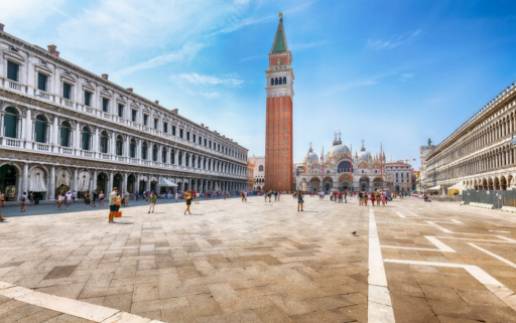Italy is a country rich in history and culture, with a strong tradition of theater and performance art. One of the most iconic forms of traditional Italian theater is Commedia dell'Arte, a style of masked comedy that dates back to the 16th century. Teatro Goldoni, located in Venice, is dedicated to keeping the spirit of Commedia dell'Arte alive and thriving in modern times. This historic theater serves as a hub for preserving this cherished art form and showcasing its lasting influence on contemporary performance art. Behind the scenes at Teatro Goldoni, audiences are treated to a glimpse of the passion and dedication that goes into upholding the legacy of Commedia dell'Arte in Venetian culture.

Teatro Goldoni: Promoting Traditional Italian Theater
Teatro Goldoni, located in the heart of Venice, is a vibrant hub for promoting traditional Italian theater. Named after the renowned playwright Carlo Goldoni, the theater is dedicated to preserving and celebrating Italy's rich theatrical heritage. With a focus on showcasing classic Italian plays and performances, Teatro Goldoni plays a crucial role in keeping the country's theatrical traditions alive and accessible to both locals and visitors alike. Through its diverse programming and commitment to quality productions, Teatro Goldoni serves as a beacon for traditional Italian theater, ensuring that audiences continue to experience the magic of the stage in all its splendor.
The Influence of Commedia dell'Arte on Modern Performance Art
The use of stock characters, masks, physical comedy, and improvisation seen in Commedia dell'Arte have all influenced contemporary theater, film, and even television.
One of the key aspects of Commedia dell'Arte that has carried over to modern performance art is the use of stock characters. Characters such as Harlequin, Pantalone, and Columbina have become iconic figures in the world of theater, and their archetypal traits can still be seen in characters in modern plays and movies. These characters often represent social stereotypes and provide a comedic and satirical commentary on society.
The use of masks in Commedia dell'Arte has also had an impact on modern performance art. While masks are not as commonly used in contemporary theater, the idea of disguises and hidden identities can be seen in many plays, films, and television shows. The use of physical comedy and slapstick humor, which are prominent in Commedia dell'Arte, can also be found in modern performances, adding an element of visual humor to the experience.
Furthermore, the emphasis on improvisation in Commedia dell'Arte has influenced modern performance art in a significant way. Many actors and comedians today use improvisational techniques to create spontaneous and engaging performances, drawing inspiration from the traditions of Commedia dell'Arte.
Overall, the influence of Commedia dell'Arte on modern performance art is undeniable. The techniques and themes of this traditional Italian theater form have transcended time and continue to shape the way we experience and appreciate entertainment today.
Behind the Scenes at Teatro Goldoni
From the lively rehearsals to the detailed costume fittings, there is a sense of dedication and passion from the actors and crew to keep the art of Commedia dell'Arte alive. The backstage area is a flurry of activity as actors prepare for their performances, applying makeup, adjusting props, and rehearsing their lines. The intricate set designs and elaborate costumes add to the immersive experience, transporting audiences back to the golden age of Italian theater. Throughout the theater, the energy and excitement are palpable, showcasing the love and dedication that goes into putting on a successful performance at Teatro Goldoni.
The Legacy of Commedia dell'Arte in Venetian Culture
Dating back to the 16th century, this popular form of theater thrived in the streets and piazzas of Venice, captivating audiences with its colorful characters and lively performances.
One of the most enduring aspects of Commedia dell'Arte in Venetian culture is its influence on the city's carnival celebrations. During the annual Carnival of Venice, revelers don elaborate masks and costumes, embodying the spirit of Commedia dell'Arte's masked characters such as Harlequin, Pantalone, and Columbina. This tradition serves as a reminder of the rich theatrical history that continues to permeate Venetian culture to this day.
Additionally, Commedia dell'Arte has had a significant impact on the development of Italian theater and performance art. Many modern Italian playwrights and directors draw inspiration from the improvisational techniques and stock characters of Commedia dell'Arte, keeping the tradition alive in contemporary productions.
Furthermore, the spirit of Commedia dell'Arte can still be felt in the streets of Venice, where street performers and buskers entertain crowds with acrobatics, music, and comedic sketches reminiscent of the improvisational nature of Commedia dell'Arte.
Overall, Commedia dell'Arte has left an indelible mark on Venetian culture, influencing everything from carnival celebrations to modern Italian theater. Its legacy continues to thrive in the vibrant streets and theaters of Venice, ensuring that this colorful and dynamic form of theater remains an integral part of Venetian cultural identity.
